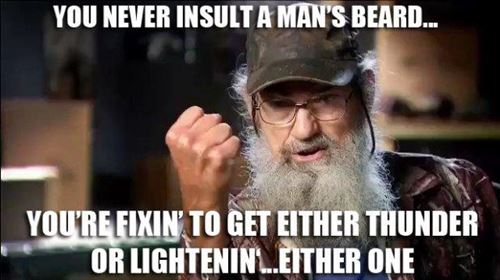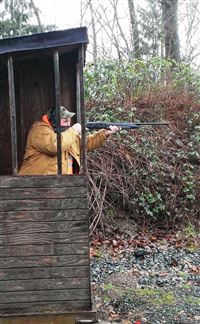 Early in our relationship, Tyla and I set up a joint calendar. There’s so much going on that without it, we’d be constantly confused about our upcoming schedule. It’s so useful that it seemed worth sharing. There are many calendar apps you could use, but we use http://calendar.live.com. I created the calendar on my account and then shared it with her. Not only can we access it through a browser, but it shows up on our phones and even in my Outlook calendar at work. Tyla is really good about keeping it updated so whenever we need to schedule something, we know that if we check the calendar, we can grab any open slot. If you have trouble planning with your friends or family members, give this a shot!
Early in our relationship, Tyla and I set up a joint calendar. There’s so much going on that without it, we’d be constantly confused about our upcoming schedule. It’s so useful that it seemed worth sharing. There are many calendar apps you could use, but we use http://calendar.live.com. I created the calendar on my account and then shared it with her. Not only can we access it through a browser, but it shows up on our phones and even in my Outlook calendar at work. Tyla is really good about keeping it updated so whenever we need to schedule something, we know that if we check the calendar, we can grab any open slot. If you have trouble planning with your friends or family members, give this a shot!
Bathroom Remodel: Before
When Tyla and I walked through this house in the fall of 2011, we loved a lot of things about it, but the master bathroom was not one of them. It was almost a deal breaker. In the end we bought the house with a plan to save our pennies for a remodel as soon as possible. When that positive pregnancy test came around, I tossed out my hopes of doing some of the work by myself and started the search for a general contractor to run the project. The project should be completed in the next couple weeks, but before I get to the pictures of our new bathroom, I figure it’s worth spending a post talking about what was there before.
I’ll start by saying that I know some of you have these features in your current bathrooms. That’s fine! Everyone likes different things and has different priorities. Just because we changed out something in our bathroom that you have in yours doesn’t mean we think you should do the same in yours (or that we even notice!) But I do think it’s useful to talk about this kind of thing. When we were shopping for houses, we learned a lot about what we like and don’t like. That info was supplemented by talking to friends about their preferences. The only way you can really form your own opinions is to see lots of ideas and hear what other people think so I’ll give you one more data point.
This is one of the few projects where I actually remembered to take a bunch of “before” photos. The one below gives you the basic idea of what we started with. This photo looks towards the sinks with the reflection of the tub and shower in the mirror. The door to the right goes into a small room with a toilet.
Actually this isn’t exactly how it was when we bought the house. There was originally carpet on the floor, but we knew that was one thing we wanted to change. When we had new carpet installed before we moved in, we didn’t put carpet there and I laid some vinyl so we didn’t have to walk on the subfloor.
The entrance to the bathroom is to the left of this photo. What you can’t see is that there is no door to the bathroom. Some people like that, but it felt so odd to us (in addition to being too noisy when we got up at different times) that we have been using the guest bathroom the entire time.
I’ll include a full project list when I post the “after” photos, but some of our top goals were to add a door to the bathroom, get rid of all the yellow synthetic marble stuff, and tile the floor. That meant that the bathroom was pretty much taken down to the subfloor and studs. The contractor estimated this at as a six week project and he’s on track to hit his estimate almost to the day. His cost estimate is coming in right on target too. I’ll reserve a full recommendation until the final tasks are crossed off the list, but we’ve been very happy with our choice so far.
While the project is six weeks on the calendar, the last couple weeks are mostly waiting around for the counter top and the shower glass to get templated, cut and installed. It’s hard to pay somebody for work that I could do myself, but I would have had to subcontract chunks of this out anyway. It was also hard to contract this out after watching Tim redo their bathroom by himself. His end product is extremely impressive and comes with a huge sense of accomplishment. All I get for contracting our project out is a hole in our bank account. But after I see how much work they put into it, I know it would have taken me forever and there’s no way I would have finished before the baby arrived. The bid included 236 hours of work. If you assume that it would take me twice as long as a professional and if I could find 15 hours a week to work on it, that’s 31 weeks of work!
I know this post is kind of a tease, but we’re hoping to have the second, more interesting post ready by mid-February. Stay tuned!
Beard
 I’ve gotten used to having my hair cut pretty low. I like being able to cut it by myself for free whenever I feel like it, and I like being able to wear a hat or helmet without getting hat hair. This winter I’ve been supplementing the short hair with a beard.
I’ve gotten used to having my hair cut pretty low. I like being able to cut it by myself for free whenever I feel like it, and I like being able to wear a hat or helmet without getting hat hair. This winter I’ve been supplementing the short hair with a beard.
It started around mid-November when I had my sinus surgery. It hurt to shave so I let the beard go for a couple weeks. That’s also about the same time I got hooked on Duck Dynasty and those guys have some great beards. That was also about the time that the ski season started and a beard works really well to keep your face warm when you’re skiing.
When I was growing up, I remember seeing a photo of Dad with a beard and I just thought it was so hilarious that my clean shaven Dad once had a beard. I don’t have a copy of it anymore and I don’t even know if I remember it correctly, but I remember it being a fun moment in my childhood. Part of me wants to keep the wild beard going and photo bomb my child in the hospital. “Daddy? Who is this homeless guy holding me in the hospital?” I’m not sure I’ll take it that far though. While I love not shaving, I think I might break out the razor once the ski season ends.
And no, the color on that photo isn’t wrong. My beard is red and my hair is blonde/brown. I don’t know how that works.

Bad Lip-Reading
While watching the Super Bowl, Tim asked if I had seen the NFL video from Bad Lip-Reading. I hadn’t, and boy was I missing out. If you’re not one of the 28 million people who has seen it, check it out below.
Your First Shotgun
 Last year I bought my first shotgun, and even though I’d been around shotguns my whole life, I didn’t really know where to start. There are many people who know way more about guns than me. If you have detailed questions, go ask someone like KenC or LoganB. But if you’re just looking for the super basics, maybe something in this post will help you. I know it was a daunting task for me. As I looked around online I found forum and after forum of people arguing tiny little details about very specific gun parts instead of giving me the overall guidance I was looking for. So in this post, I’ll describe what I was looking for, some features I looked at along the way, and what I ended up with.
Last year I bought my first shotgun, and even though I’d been around shotguns my whole life, I didn’t really know where to start. There are many people who know way more about guns than me. If you have detailed questions, go ask someone like KenC or LoganB. But if you’re just looking for the super basics, maybe something in this post will help you. I know it was a daunting task for me. As I looked around online I found forum and after forum of people arguing tiny little details about very specific gun parts instead of giving me the overall guidance I was looking for. So in this post, I’ll describe what I was looking for, some features I looked at along the way, and what I ended up with.
First off, I’m not really interested in hunting. I have nothing against it and could see picking it up in the future, but this gun purchase was 100% for shooting trap. If you’re going to be hunting, then you might want to research what characteristics work well for the animal you’re hunting.
There are lots of shotgun sizes. You could get (in order of smallest to largest) a .410, 20 gauge, 16 gauge, 12 gauge, 10 gauge or even an 8 gauge. Those numbers refer to the diameter of the barrel. The 12 gauge is the most popular and is pretty much the only thing you’ll see at the trap range unless a junior is there with a 20 gauge.
Once you decide on the size of the gun, you need to figure out how the gun will cycle through multiple shots.
- A single shot gun means that you put one shell in at a time. Every time you fire you break the barrel open, eject the old shell and put the next one in.
- Pump shotguns will hold about five shells. After you shoot, you pull the forestack back and push it forward again to eject the old shell and insert the new shell. This is a very common entry level gun.
- A semi-automatic shotgun looks roughly like a pump shotgun except that every time you shoot, the shell is automatically ejected and the next one is chambered. You can immediately pull the trigger again to fire the next round.
- An over-under shotgun has two barrels with one on top of the other. You break the barrel open to manually insert a shell in each barrel, but then you can rapidly shoot two shells in succession.
- A side-by-side is similar to an over-under except the barrels are laid out horizontally instead of vertically. These aren’t too common anymore.
A semi-automatic or over-under is what you’ll see more advanced trap shooters using because the more complicated versions of the game require multiple shots. You can’t really use a pump shotgun fast enough to get off two shots in trap. Those types of guns are also significantly more expensive. This was going to be my first gun. I didn’t know how long I’d stick with the sport so I didn’t want to spend a ton. That meant I was getting a pump.
At this point I knew I was getting a 12 gauge pump and I just had to pick out the specific model. Two of the most common entry level guns in this category are the Mossberg 500 and the Remington 870. Both have been produced for the last 40-50 years. That means they’ve worked out all the bugs and there is a huge after market parts selection if you want to customize your gun. Plan on spending about $400-500 for the gun, a cleaning kit and a case. I chose the Remington 870 but they’re both good American-made guns. The other things you’ll need right off the bat are some kind of ear protection (foam ear plugs work fine) and safety glasses.
Both of these guns come in multiple barrel lengths. Most trap shooters will use a barrel between 28 and 32”. The longest Remington 870 gun I could find came with a 28” barrel, but as I mentioned before, you can buy other barrels for it down the road. I haven’t done that yet and don’t plan to. My first purchase will probably be a longer stock because that part is a bit to short for me. This is also useful if you’re looking for a home defense shotgun. You could buy one of these guns and then buy a second, shorter barrel.
So how do you buy a gun? That varies widely by state and what type of gun you’re buying. In Washington, you just walk into a store, fill out some paperwork, wait a few minutes for them to do a quick background check by phone and then you’re walking out with a shotgun. Shop around because prices do vary. While Sports Authority isn’t the first place I’d think to buy a gun, they had the best deal so that’s where I bought it. There are used markets for shotguns, but be careful to check the laws about transferring ownership and make sure you know the quality of what you’re buying. If you really want to go used, you might want to start with an actual gun dealer for your first purchase.
Once you have the gun, check out wheretoshoot.org to find a range near you. If you live around me, check out the Kenmore Shooting Range. They have archery, rifle, pistol, and shotgun facilities available. Their website is about 10 years old, but the facility and the people that run it are great. I’d be more than happy to go with you and show you around.
Your Credit Card Was Stolen
 Credit cards are getting stolen a lot these days, but the credit card companies are getting really good at detecting this. The last time it happened, I received a call after only one fake charge had been made and I hadn’t even noticed it! The replaced my card and the whole situation barely made me miss a step.
Credit cards are getting stolen a lot these days, but the credit card companies are getting really good at detecting this. The last time it happened, I received a call after only one fake charge had been made and I hadn’t even noticed it! The replaced my card and the whole situation barely made me miss a step.
The flip side of this is since it’s becoming more common, it’s a good place for scammers to hop in and confuse us. I just received a call saying my card had been compromised so it was now locked and I needed to input some information into the phone system. My suspicions were already high because the call was from 000-000-0000 and it referenced a card from a company that I didn’t think I did business with.
The bottom line is that you should assume ALL calls pertaining to anything like your credit card, bank information, retirement accounts, etc are fake. When I get a call like this that I think might be legit, I ask for the caller’s name and extension and tell them I’ll call them back. I then go look up a number that I trust from their main website or from the back of the card and try to get back to that extension. I did that last time my card was stolen and the guy said, “Wow, that was smart. I’ve never had anybody do that before.” It should be very common!
You’re not required to give out your information to anyone. Think about how you can verify the person you’re talking to. Social engineering scams like this are increasingly popular and you need to always have your guard up. If you’re interested in the topic and/or want to learn more ways to protect yourself, check out Kevin Mitnick’s book called The Art of Deception.
A Tale Of Tile
We’re a couple weeks away from having our master bathroom remodel finished. I’ll do a full write up on that with lots of pictures when it’s finished, but I wanted to share one small slice of the project with you now.
Going into this project, one of the biggest question marks in my head was how in the world we were going to decide on what tile to used. We needed to pick out a new counter top, tile for the floor, and tile for our soaker tub and the shower stall. I looked around at the websites of a few tile places and was scared away by what I thought would be extremely high prices. Looking to save a buck, I headed to a discount tile store in Bellevue. They’re small but they have a nice showroom and the employees were fantastic in helping me design our bathroom. I took in a door from the cabinet and walked out with samples to show Tyla. The floor was white with some gray and brown in it and the shower/tub tile was 8×20” sage. The counter was a gray color. She loved the look so as soon as we signed the contract with our general contractor, we placed the order for the tile. Everything was scheduled to arrive two weeks before the contractor started any work on the bathroom. Perfect!
The tile arrived so I picked it up and set it in the garage. We had the 8×20 wall tile, 20×20 floor tile, and rocks for the bottom of the shower. The next day I realized that the wall tile and the rocks were wrong.
No problem. I called, they ordered the new stuff and said it would arrive in a couple days. A couple days turned into a couple weeks but they were sure that it would show up on the exact day that the tile install was scheduled to begin. The correct rocks did show up pretty quickly but I had to wait for the tile.
While I waited, I got more and more nervous about what would happen if the tile didn’t show up. Additionally, I wasn’t sure I even wanted it to show up. Was that sage green going to look ok? Would it still look good in 10-15 years?
The magic day came with silence so I gave them a call. They had to check on it and get back to me. “Your tile isn’t here. It’s not coming. It’s never coming. It’s discontinued.” Apparently the warehouse they work with had been sending mixed messages and here I am at the end of the chain with a contractor waiting to install tile that I don’t have. Yikes.
Thankfully my contractor was super helpful. He suggested a couple places in this huge complex of tile warehouses in south Seattle that kept a lot of tile in stock. They looked pretty fancy but what could I do? We were in a hurry. Tyla and I headed down there with our contractor and asked to only see tile that was in stock. We pretty quickly settled on a 12×12 tile that was gray with some brown in it. And the price? The price about 40% of what the original tile cost! We picked up the tile that same day and we were back in action. On top of that, I felt a LOT more comfortable with our less ambitious design. I figure that gray, brown and white are going to be at least sort of in style for a long time.
I eventually got my money back from the original tile store, the new tile got installed, and it all has a happy ending (minus a few weeks of little sleep, but that’s just prep for a baby, right?) If we ever need tile again, I’ve learned my lesson and will head back to one of the big tile warehouses like Daltile where we ended up getting our tile. The prices were excellent and a lot of it was in stock. What does the new tile look like? You’ll have to wait a couple more weeks until the bathroom is finished!
How A Watch Works
I don’t remember where I saw this video posted, but it was pretty interesting (in an incredible slow moving 1949 sort of way.) They are ingenious machines with very intricate machining, but they’re no longer a mystery to me.
How To Shoot Trap
 Logan and I took the “Break More Birds” class at the Kenmore range last weekend. It’s a two hour class that includes two rounds of trap and only costs $35. it’s an incredible deal and I want to take it again in a couple months. Unfortunately it was raining pretty hard for the whole class, but that didn’t stop us from learning a lot.
Logan and I took the “Break More Birds” class at the Kenmore range last weekend. It’s a two hour class that includes two rounds of trap and only costs $35. it’s an incredible deal and I want to take it again in a couple months. Unfortunately it was raining pretty hard for the whole class, but that didn’t stop us from learning a lot.
The class started with us shooting at paper targets to check the spread of our shots at about 40 yards. The spread on my gun was a bit too large and explains why there have been a couple times when I know I was right on the clay but it didn’t break. I’m going to go two notches tighter and pick up a full choke to keep the pattern tighter. That means I have to be more accurate with my shots but it also means that there shouldn’t be any chance of a bird squeaking through a good shot.
From there we talked about foot positioning (I was too wide), arm positioning (my right arm was low) and some other details about how we mounted our guns. After that it was time to pull the trigger and they let us shoot at some birds and critiqued each shot. A lot of us were having trouble smoothly swinging the gun all the way through the shot so they let us load two shells and had us shoot twice to mentally force us to keep the gun on the bird through the first shot. That was a ton of fun. I’ve never loaded two shells into my gun at once and while a pump isn’t the best option for two shot trap, it was fun to pump and shoot again.
It turns out I’m not as sloppy as I thought I might be but they did have some good tips. It will take me a little while to adjust to the suggestions, but hopefully the end result will be positive.
Here are some of the things I remember them telling me during the class. This isn’t a substitute for taking the class yourself, but maybe it will give you a few ideas:
- Elbows up! You want to form a nice solid triangle with both arms. As you raise your right arm you’ll form a pocket that holds the butt of the gun.
- Your left index finger (for righties) should be pointed forward. It helps you to naturally point at the target with the gun. I picked that one up by watching the Olympics.
- Feet should be shoulder width apart with about 60% of your weight on the front foot.
- Swing through the shot. Don’t jerk ahead of the target, stop, and then shoot.
- Pull the trigger quickly. Don’t pull slowly like you do for rifle and pistol.
- Hit the bird on the way up. As it hits the apex, the bird levels out and the cross section is a lot smaller.
- Each station should have it’s own stance. The more angle of your front foot really affects how easily you can swing to hit all of the shots that you might get from that station.
- As you start at station 1, start your gun on the left edge of the box but your eyes in the middle of the box. The opposite is true for station 5. It helps you cheat to catch those shots to the sides.
- In competitions, guys wear blinders and stare at the ground ahead of them when it’s not their turn so they aren’t affected by people who miss or hit behind them.
All in all I’m really impressed with the class. Two instructors for five students, two rounds of trap, and all that was only $35. Kudos to the Kenmore range for a great class and thanks to our instructors, Wayne and Nathan, for all their help.

Martens Pilsner
When Andy and Stephanie showed up to watch the Super Bowl, he had a four pack of Martens Pilsner! Apparently they sell it at a local Whole Foods, and after checking the Total Wine website, I think they might have it too. I was so excited to finally get to try it! At the risk of offending my namesake brewery, the beer isn’t anything to special and is reminiscent of a Coors Light. Then again, I’d say that about a lot of pilsners. Yes I realize they’re different types of beer, but they’re so different from my normal beer that they kind of blend together in my memory.
So now I have a source for Martens beer. My quest continues to find t-shirts, hats, neon signs, pint glasses, or anything else from the brewery. This might require a trip to Belgium.